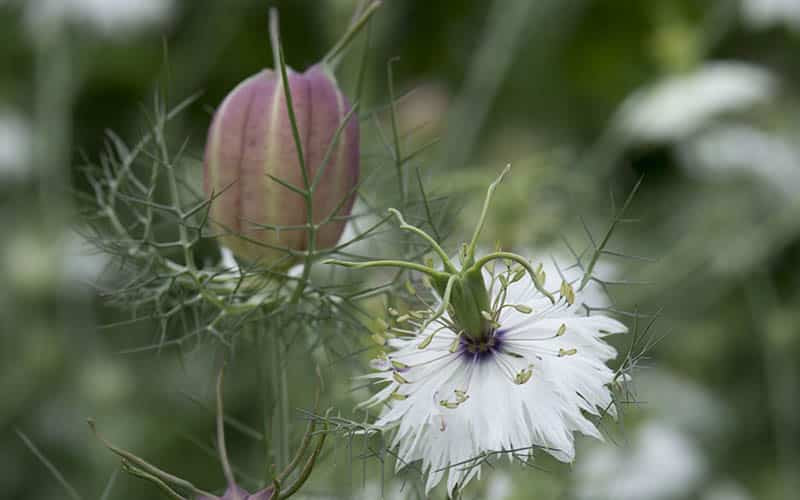There are some flower varieties that are best started in the fall. Flowers in this category are referred to as biennials or hardy annuals that bloom early in summer. You can recognize them by the name half-hardy to hardy annuals or hardy biennials.
So why sow in autumn?
You can sow these plants in the fall because they often require lower temperatures to germinate, or they germinate because of the difference in day and night temperatures. In nature, these seeds would fall to the ground and also germinate at the end of the summer or at the end of winter. Because you sow them already in the fall, the plants have a long time ahead to grow. By the time you’ve planted them out in early spring, they can root very well in their final spot to support the new foliage growth. When the days get longer and the weather finally starts to warm up the plants are at their best and can grow with maximum speed. As a result, they often produce longer, much longer, stems because the plants have been able to grow much larger. In addition, they often bloom earlier than spring sown plants.
We start all the seeds in seed trays in our greenhouse. This way we have more control over the amount of water they get and the seeds don’t get washed away in heavy rainfall. In winter the temperature inside the greenhouse does not differ much from the outdoor temperature. However, when the sun is shining temperature rises inside the greenhouse. So if you would like to buy a greenhouse with the idea that it will not freeze inside then I’m sorry to disappoint you.
Below is a list of well-known flowers that you can sow in the fall
Snapdragons (Antirrhinum)
Well-known beautiful classics which you can sow already in autumn. They are hardy to -5 degrees. On cold nights we cover them with fleece. They are protected from rain, wind, and snow in the greenhouse all winter.

Larkspur (Delphinium)
A favorite in the garden is for sure delphinium! They are very hardy and seedlings overwinter just fine in the greenhouse with minimal protection. They germinate with fluctuations in temperature and are therefore very suitable to sow in the greenhouse in early October. By sowing them in the autumn you get nice tall stems. Some seed packages say you can also direct sow them but with heavy rainfall plants easily rott because they don’t do well in wet and soggy soil.
Cornflowers (Centaurea cyanus)
For many gardeners an unexpected plant on this list. Cornflowers withstand cold temperatures of -10 to -15°C. We sow them in the greenhouse in October in seed trays and plant them out in the spring. The cornflowers you sow in the fall are much taller and stronger, so we actually prefer to sow them in the fall. You can sow them again in spring for the second round of fresh flowers later in the summer.

Lace flower (Ammi Majus and Ammi Visnaga)
If you are wondering how it is that your Ammi stays so small then this is probably your answer. Sowing in the fall ensures that you get beautiful tall plants that you can use well in bouquets. They are very hardy and can easily handle -10°C.
Greater Quaking Grass (Briza maxima and media)
Incredibly funny grass that you can also dry well. Autumn sown plants are suitable for picking fairly early in the year at the same time as early flowering biennial flowers.

Euphorbia
Euphorbia is a beautiful bouquet filler that is moderately hardy but can easily handle -5 to -10°C in the greenhouse if you have sown them in the autumn in seed trays in the greenhouse.
Malope
We often come across self-sown Malope and related species in the fall and late spring. They are winter hardy and can be sown in the greenhouse in September or October or in February/March.
Love in a Mist (Nigella damascena)
Both as a cut flower and as a dried flower, nigella is fantastic. They are not very hardy and therefore we always sow them in the greenhouse. In cold weather they need extra protection with a layer of fleece. They are not very resistant to transplanting and therefore we sow them in larger seed trays (40 deep or 28 cell).



